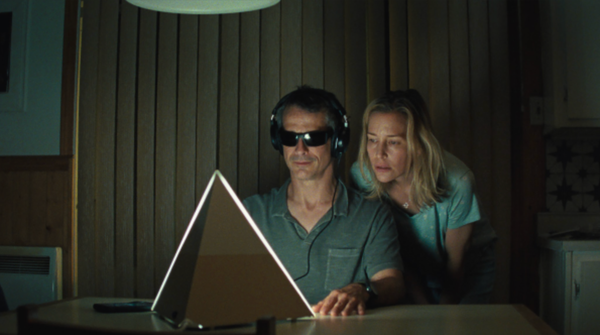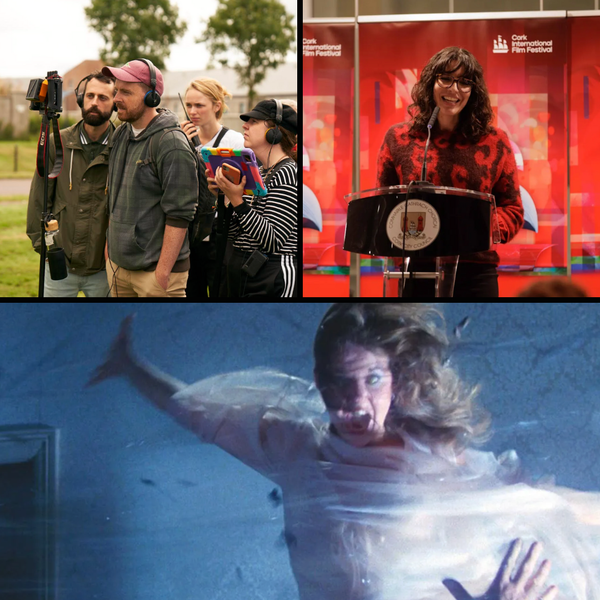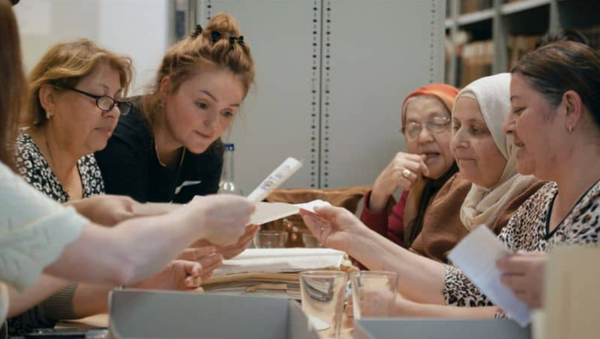In this sponsored preview for the Cork International Film Festival, Will Penn catches How to Be Normal and the Oddness of the Other World ahead of its screening on 12th November.
Trigger warning: This review examines a film dealing with mental health breakdown and psychosis. While the film approaches these subjects with compassion rather than exploitation, both the film and this review contain discussions of psychological crisis, altered reality experiences, and the social isolation that can accompany mental illness.
In 2008, psychiatrist Joel Gold observed a striking new phenomenon among his patients at Bellevue Hospital Center. Paranoid delusions have always accompanied psychosis – medieval patients believed God intervened directly in their lives; 1940s patients feared radio wave mind control. But their manifestations shift with cultural context. Working with his brother Ian, Gold documented a contemporary iteration: cohorts of young men who believed they were subjects of reality TV shows, their families paid actors, cameras hidden in their bathroom mirrors. The research, published in Cognitive Neuropsychiatry in 2010, named this phenomenon “Truman Show Delusion.” While the persecution complexes were nothing new, the findings underscored how patients experience universal psychotic symptoms through the lens of their specific historical moment.
How To Be Normal and The Oddness of the Other World is a bold examination of these ideas from a formally daring perspective. Florian Pochlatko’s feature-length debut follows Pia (Louisa-Céline Gaffron), a young woman recently released from a psychiatric institute, and her attempts to reintegrate into society. She sleepwalks through an unrewarding job in her father Klaus’ (Cornelius Obonya) printing company, only to argue with her mother, Elfie (Elke Winkens). It draws from scenes in The Matrix, campy horror references, absurd TikToks promising better skin, a more normal way of being. Over the course of the film, we flit between arthouse, horror, comedy and sci-fi. There is even a suspicious reference to Barry Keoghan’s gory spaghetti scene from The Killing of a Sacred Deer. This carousel of reference isn’t homage but part of Pia’s kaleidoscope of shifting textures and images.
Through all its stylistic shifts, the film never loses sight of Pia's fracturing reality. The first comes from the growing terror of losing trust in her ability to discern reality. The office world devolves into a Kafkaesque treadmill of scanning and uploading; her mother's work is designed to frighten people and elicit responses rather than inform them. This creates a world so alien and uninviting that it is surreal in its own right. The second comes from the stigma that meets her as she simply tries to get better. How others treat Pia is its own destabilising force, mirrored by increasingly fractured cinematography that reflects her collapsing internal state. As she tries to rebuild her life, her friends and family do little to assuage her fears. One friend is too shocked to laugh at her jokes about seizures; her former lover demands honesty but cannot reciprocate; her father weaponises her previous episodes to control her. The gradual erosion of her autonomy warps into its own dizzying, heart-thudding force.
But despite the heaviness of the subject matter, there is a surprising amount of levity. In an interview in May, Pochlatko said that he hadn’t initially wanted to make a mental health film but had had a few friends who had attempted to die by suicide. He said that he felt an admiration for them for putting it behind them, and this respect bleeds through the screen. As Pia stops taking her medication and begins waking at strange hours, convulsing in painful heaps, the textural changes and perspective shifts underscore the sensory nature of psychosis – a throwaway comment about having cheese for a face manifests literally, voices of secondary characters take over the narration, a clown sits in the boardroom. It gives a profound, harrowing insight into what it means to live in a fractured reality, one riven with geographic, temporal and psychical dissonances while avoiding the gratuitousness and exploitation that plague other films. Pia and her story are examined with kindness, weaving heartbreak and humour into each other sensitively and carefully.
This, to me, is the key point of what makes this such an effective film, because there is no better medium to explore Pia’s story than through this medium. How To Be Normal never fully articulates what can only be felt or seen, respecting both its subject and its audience by communicating the visceral, but ultimately optimistic, experience of psychosis in a groundbreakingly entertaining way. With a Fight Club reference and another fourth-wall break, the audience is reminded that they too are participants in a particular construction of reality.
How To Be Normal and The Oddness of the Other World screens at Cork International Film Festival on 12th November.
A talk with the filmmaker will follow the screening, hosted by Dr. John Goodwin, School of Nursing & Midwifery, University College Cork.
The Cork International Film Festival runs from the 7th to the 16th of November, 2025.
For the full line-up, check out corkfilmfest.org.







